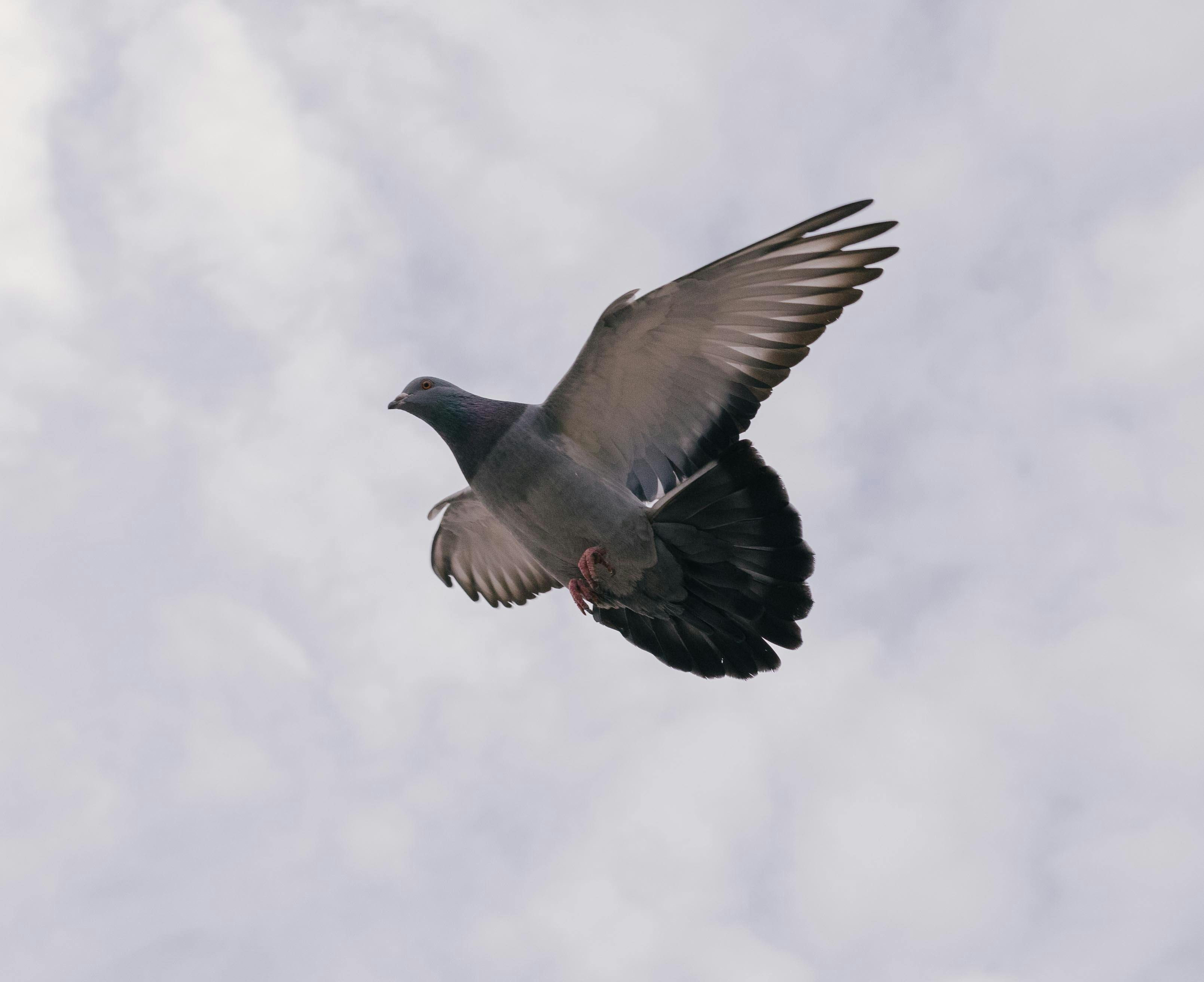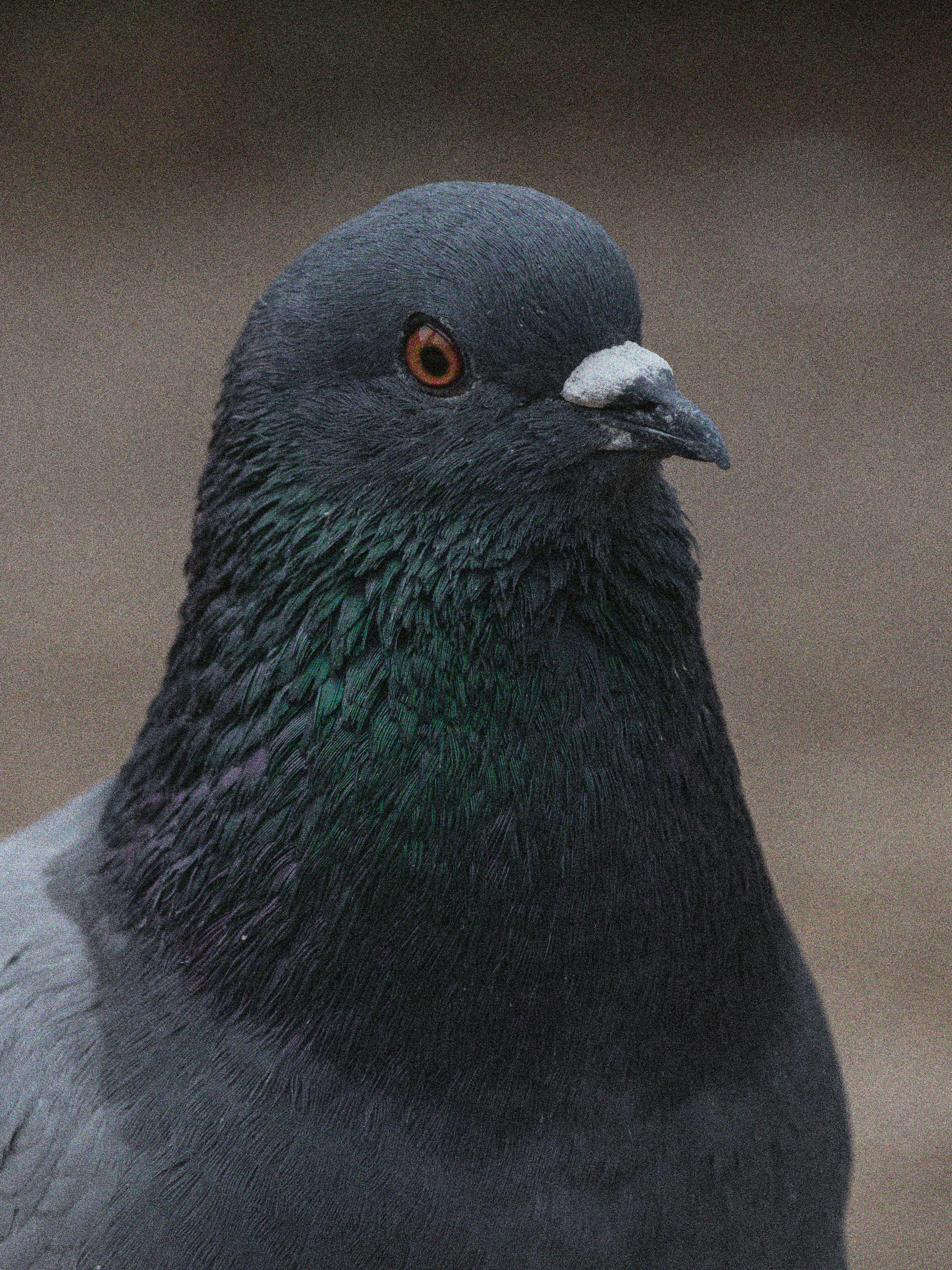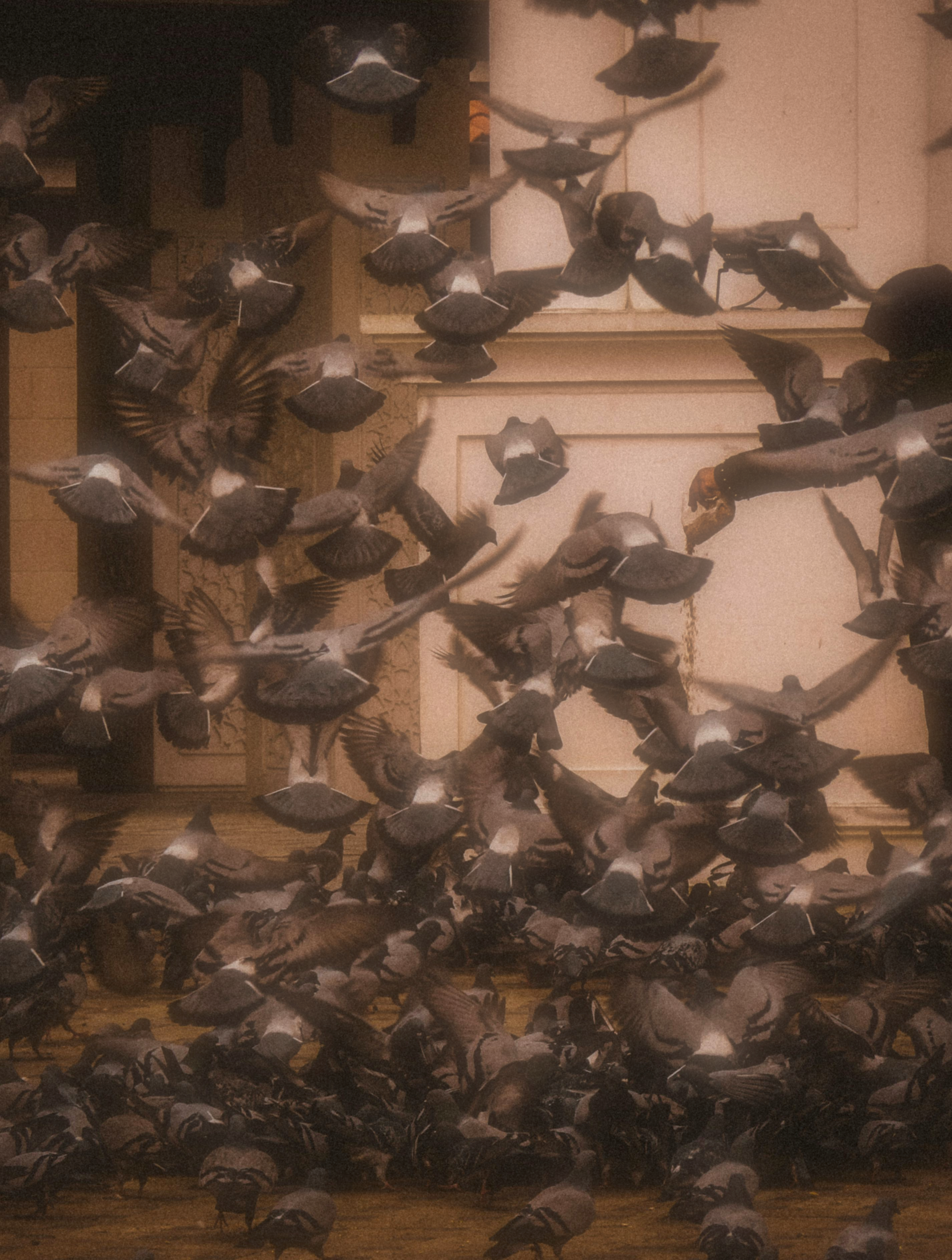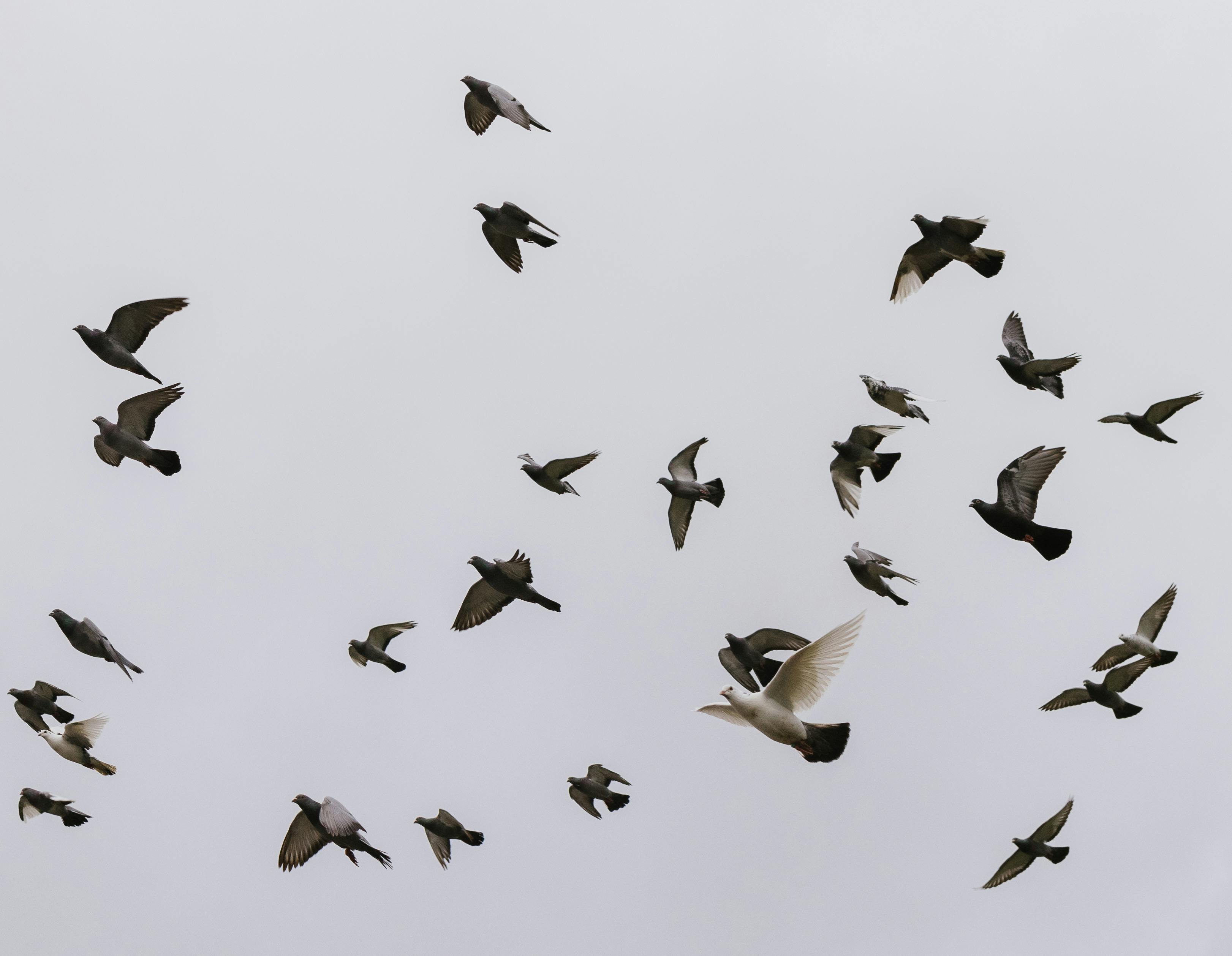
Context
Rats with wings. Invaders of urban spaces. Antithesis to culture. Plague. Enemies. These are all names and representations attributed to pigeons in the West, particularly in the American empire, wherein this essay is situated.

Here is the most common pigeon in the United States [1]. The rock pigeon (Columba Livia), also called the rock dove. If you find yourself out and about in a city, it is highly likely that you will encounter one of these birds. Today, the rock pigeon is wild but descends from a domesticated species with roots in Asia, North Africa, and Europe [2]. Wild became domesticated became rewilded. But, before exploring the controversial present of pigeons, I would like to take a step back to the foundation of this empire. These lands knew pigeons in the past; they are a part of its History. Pre-colonization, the insides, in-betweens, and all-overs of understories and overstories were populated by passenger pigeons [3], mourning doves [4], and band-tailed pigeons [5]. Of these birds, the passenger pigeon no longer exists, extinct for over a century. The reason for this is inextricably linked to the arrival of the settler and the expansion of a colonial logic that painted this continent as empty and infinitely exploitable.
These birds, of course, were not alone. Turtle Island has never been a terra nullius. There is a long history of Indigenous peoples on these lands, something that colonial forces try to render forgotten. Before the bird’s extinction, different rules informed passenger pigeon hunting, a way to ensure that these birds would not be endangered [6, p. 207]. To be more exact and to not paint a monolithic image of Indigenous peoples, Simon Pokagon explains that passenger pigeons were a part of his nation’s diet, the Potawatomi, and that they rarely killed adult birds [7, p. 204]. A variety of human-pigeon interactions spiraled and crossed between Algonquins, Narragansett, Choctaw, Huron, Seneca, Micmac [6, p. 207-208] Haudenosaunee [8], Meherrin [9] peoples, and possibly more. But any of these relations were unalterably broken by the settler.
Simon Pokagon refigures and deepens relations with passenger pigeons: “the bird so much resembled the domesticated pigeon; they naturally called it a wild pigeon, as they called us wild men” [7, p. 202]. This situates the Indigenous person and the pigeon in a sort of primitivist captivity, rendering colonization justifiable because the New World, under this logic, must be modernized and rid of its traces of wildness. It is such a modernization that eternally changed Turtle Island. From 1492 to 1650, 54 million Natives were killed by settlers and their importation of colonial violence across many fronts [10, p. 33]. And, by 1902, the passenger pigeon, once numbering in the billions, were completely decimated, a result of over-hunting by colonizers [11]. Martha, the last passenger pigeon, died in 1914, in captivity [11]. Even if the link between the extinction of the passenger pigeon and the ongoing genocide of Indigenous peoples is not explicit or direct, their concurrence is undeniable – the same lands and the same colonial eras. The history of the passenger pigeon, and that of their connection to Indigenous peoples, figures into a larger colonial history of the West that seeks to disconnect and hierarchize the world and, along similar lines, make impossible a making-with across species. Such events must be remembered such that they do not recur within the spiral of history.
Back to the present, the pigeon is wild yet again. The dominating image of this bird, especially in the United States, is that of a flying rat that transgresses the prefigured boundaries between humans and nature. It’s the amassment of their droppings, their invasion of “our” lives and “our” spaces, and disease-carrying nature that pose problems to “us”. But, in reality, these are fabricated fictions and semi-truths. In his essay “How Pigeons Became Rats: The Cultural-Spatial Logic of Problem Animals”, Colin Jerolmack traces the history of the phrase “flying rat”, situating it within a conversation of nature and culture [12]. He posits that “the unchecked presence of these ‘dirty birds’ signals a cityscape that is not subdued”, contradicting the supposed pristine and virginal state of cities [12, p. 88]. Human control of culture and nature comes into question by the presence and movement of pigeons. They guide us toward the faltering ground of the logic of human domination. As a response, those in charge (of governments, corporations, capital) demote this bird to the bottom of the animal kingdom, ensuring that we don’t think of pigeons in a different, deepened manner [12, p. 87]. We remained glued to an anthropocentric understanding of the world.

But pigeons are not malicious beings. This is not to pose a moralistic argument as being the best response – “pigeons are in fact good”. Rather, the logic that positions the pigeon as malicious (nourished by Western colonial ideals) is wrong. The argument always starts with human superiority and their moralistic high ground which in turn informs our anthropomorphized understanding of other living beings. It is possible to pierce (or, better, break) this logic with science and interspecies entanglement. The rhetoric of the nature-culture divide must stop. Studies and interspecies experiences pick at this divide. Here I turn to science; the following are some discoveries made. Though the exact mechanisms are not yet clear, pigeons can use the sun, olfactory senses, or magnetic fields to home [13]. They are also able to discriminate between space and time [14]. In groups, more experienced pigeons pass on information concerning travel routes, showing the development of intergenerational knowledge [15]. Though there are more examples, these snippets provide evidence in underlining the fact that some markers of so-called human intelligence are not actually human-specific. Man’s rule of the world is not so strong after all… because it is rooted in fiction.
Diving deeper, pigeons can act as guides and teachers to help us understand and pay attention to the world that surrounds us, even if that world is a city. In the chapter “Playing String Figures with Companion Species” of Staying with the Trouble, Donna Haraway documents cum panis stories (meaning companion species) and making-with between humans and pigeons [16]. Similarly, the authors of “Loved or loathed, feral pigeons as subjects in ecological and social research” outline ways in which pigeons can give clues about information concerning climate change and pandemics [17]. Also, because of their proximity to humans, there is an opportunity to engage the public in science, observing behavioral changes in the bird [17]. We do not need ideas of the “great man” to act as our compass. Another relationality is possible. To begin problematizing how we interact with other living beings, we must abandon binarisms. There are binarisms that tell us that a pigeon must be either good or bad. To think in such away risks misinterpreting these birds, fixing them within rigid value judgments. On the other hand, solely conceptualizing pigeons through their use value recenters human domination

There lay a multiplicity of tasks in the future in this world of crises. Interspecies entanglement with pigeons is most likely not a priority, but, despite this, we can still begin to understand their signaled communication with us. They carry with them encoded sociocultural and political messages of the past, present, and future. Times are arriving in which we must interrogate and reevaluate the domination of humans, and pigeons can be guides along that process.